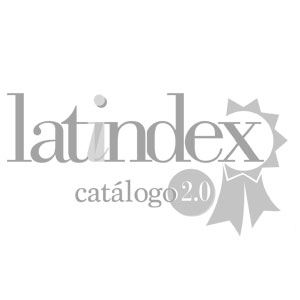Interacciones entre ámbitos regulatorios: el nuevo derecho administrativo y las agencias de calificación crediticia en una sociedad globalizada
Este artículo analiza la legislación europea y la literatura académica sobre la regulación de las Agencias de Calificación Crediticia en momentos de crisis, centrándose en la perspectiva del derecho administrativo de la gobernanza global. Para ello, se propone una perspectiva que considera un proceso comunicativo para minimizar las consecuencias negativas para la sociedad en el contexto de la actividad regulatoria de las Agencias de Calificación Crediticia. Se examinan las regulaciones existentes, informes de autoridades europeas, estadounidenses e internacionales así como la literatura relevante para comprender cómo se abordan los desafíos regulatorios en la era de la globalización.
Detalles del artículo
Uso de licencias Creative Commons (CC)
Todos los textos publicados por el Boletín Mexicano de Derecho Comparado sin excepción, se distribuyen amparados con la licencia CC BY-NC 4.0 Internacional, que permite a terceros utilizar lo publicado, siempre que mencionen la autoría del trabajo y la primera publicación en esta revista. No se permite utilizar el material con fines comerciales.
Derechos de autoras o autores
De acuerdo con la legislación vigente de derechos de autor el Boletín Mexicano de Derecho Comparado reconoce y respeta el derecho moral de las autoras o autores, así como la titularidad del derecho patrimonial, el cual será transferido —de forma no exclusiva— al Boletín para permitir su difusión legal en acceso abierto.
Autoras o autores pueden realizar otros acuerdos contractuales independientes y adicionales para la distribución no exclusiva de la versión del artículo publicado en el Boletín Mexicano de Derecho Comparado (por ejemplo, incluirlo en un repositorio institucional o darlo a conocer en otros medios en papel o electrónicos), siempre que se indique clara y explícitamente que el trabajo se publicó por primera vez en este Boletín.
Para todo lo anterior, deben remitir la carta de transmisión de derechos patrimoniales de la primera publicación, debidamente requisitada y firmada por las autoras o autores. Este formato debe ser remitido en PDF a través de la plataforma OJS.
Derechos de lectoras o lectores
Con base en los principios de acceso abierto las lectoras o lectores de la revista tienen derecho a la libre lectura, impresión y distribución de los contenidos del Boletín por cualquier medio, de manera inmediata a la publicación en línea de los contenidos. El único requisito para esto es que siempre se indique clara y explícitamente que el trabajo se publicó por primera vez en el Boletín Mexicano de Derecho Comparado y se cite de manera correcta la fuente incluyendo el DOI correspondiente.

Esta obra está bajo una licencia internacional Creative Commons Atribución-NoComercial 4.0.
Citas
Aizenman, J., Binici, M., Hutchison, M. M. (2013). Credit Ratings and the Pricing of Sovereign Debt during the Euro Crisis. Oxford Review of Economic Policy, 29(3), 582-609. https://www.nber.org/system/files/working_papers/w19125/w19125.pdf
Alsakkaa, R., Gwilym, O., and Vu, T. N. (2014). The Sovereign-Bank Rating Channel and Rating Agencies’ Downgrades during the European Debt Crisis. Journal of International Money and Finance, 49(PB), 235-257.
DOI: 10.1016/j.jimonfin.2014.03.012
Aman, A. C. (2005). Privatization, Prisons, Democracy, and Human Rights: The Need to Extend the Province of Administrative Law. Indiana Journal of Global Legal Studies, 12(2), 520.
Anonymous. (2020, May 9). Markers Marked. The Economist, 435(9193), 57-58, at 57.
ASA (Advertising Standards Authority) (n.d.). Home. Retrieved from http://www.asa.org.uk/
Avezuela Cárcel, J. (2008). Agencias. El Ejemplo Norteamericano (Vol. 5). Fundación Ciudadanía y Valores.
Barnés, J. (2019). The Evolution of Public/Private Divide. A Functional Approach to Administrative Law. Regulatory Activities and Public Services. In Jean Bernard Auby, Stéphane de La Rosa, and Julien Boudon (Eds.), Le futur du droit administratif - The future of administrative law (pp. 79). Paris: LexisNexis.
Barnes, J. (2017). Three generations of administrative procedures. In Susan Rose-Ackerman, Peter L. Lindseth, and Blake Emerson (Eds.), Comparative Administrative Law (p. 343). Edward Elgar Publishing.
Barnés, J. (2011). Hacia Una Teoría Contemporánea De La Organización Administrativa. Una Nota Introductoria. In X Foro Iberoamericano de Derecho Administrativo (Ed.), Retos de la Organización Administrativa Contemporánea (p. 471). El Salvador.
Barnés, J. (2015). Transforming Administrative Procedure. Global Law Press.
Barnier, M. (2012, February 29). Written answer on behalf of the Commission when asked by the press on CRAs issue. European Parliament, Parliamentary questions - E-000566/2012(ASW).
Becker, B., and Milbourne, T. (2011). How Did Increased Competition Affect Credit Ratings? Journal of Financial Economics, 101(3), 493-514. https://doi.org/10.1016/j.jfineco.2011.03.002
Bussani, M. (2010). Credit Rating Agencies’ Accountability: Short Notes on a Global Issue. Global Jurist, 10(1), 1.
Bush, C. (2022). Dealing with the Conflicts of Interest of Credit Rating Agencies: A Balanced Cure for the Disease. Capital Markets Law Journal, 17(3), 334-364.
Cassese, S. (2005). Global Administrative Law: An Introduction. Journal of International Law and Politics, 37(4), 663-694.
Cherednychenko, O. O. (2016). Cooperative or Competitive? Private Regulators and Public Supervisors in the Post-Crisis European Financial Services Landscape. Policy and Society, 35(1), 103-114. https://doi.org/10.1017/S1449403515000516
Cotterrell, R. (2009). Does Legal Pluralism Need a Concept of Law? Law and Politics Book Review, 19(10), 774-779.
Collins, H. (2015). Flipping Wreck: Lex Mercatoria on the Shoals of Ius Cogens. In Stefan Grundmann, Wolfgang Kerber, Anne van Aaken, and Reinhard Zimmermann (Eds.), Contract Governance: Dimensions in Law and Interdisciplinary Research (pp. 383-406). Oxford. https://doi.org/10.1093/acprof:oso/9780198723202.003.0023
Committee on Economic and Monetary Affairs. (2011, March 23). Report On Credit Rating Agencies: Future Perspectives (2010/2302(INI)). A7-0081/2011. Rapporteur: Wolf Klinz.
Committee on the Global Financial System. (2008). Ratings in structured finance: what went wrong and what can be done to address shortcomings? CGFS Papers, No 32, 28.
Council of Bars and Law Societies of Europe. (2021). Model Code of Conduct for European Lawyers. https://www.ccbe.eu/fileadmin/speciality_distribution/public/documents/DEONTOLOGY/DEON_CoC/EN_DEONTO_2021_Model_Code.pdf
Deb, P., & Murphy, G. (2009). Credit Rating Agencies: An Alternative Model. London School of Economics Working Paper.
Eijffinger, S. C. W. (2012). Rating Agencies: Role and Influence of Their Sovereign Credit Risk Assessment in the Eurozone. Journal of Common Market Studies, 50(6), 912-921.
ESMA (2023, April 25). Market Report on the EU Credit Ratings market 2023 (ESMA Document No. ESMA50-165-2477).
ESMA (2014, September 17). Technical Advice (ESMA Document No. ESMA/2014/850rev).
European Commission. (2013, June 18). New rules on credit rating agencies (CRAs) enter into force – frequently asked questions (Memo No. MEMO/13/571).
ESMA (2013, March 18). Credit Rating Agencies Annual Report 2012 (ESMA Document No. ESMA/2013/308). Retrieved from [https://www.esma.europa.eu/sites/default/files/library/2015/11/2013-308.pdf]
European Commission, Directorate-General for Financial Stability, Financial Services and Capital Markets Union. (2015, December). Study on the Feasibility of Alternatives to Credit Rating. Executive Summary. EV-02-15-689-EN-N.
European Commission, Directorate General Internal Market and Services. (2010, May 11). Public consultation on credit rating agencies, 19-23.
European Commission. (2013, June 18). New rules on CRAs enter into force – faqs. MEMO/13/571 Event Date: 18/06/2013.
European Commission. (2015). Report from the Commission to the European Parliament and the Council on the Appropriateness of the Development of a European Creditworthiness Assessment for Sovereign Debt, COM (2015) 515 final.
European Commission (2016). Report from the Commission to the European Parliament and the Council, COM (2016) 664 final.
Freeman, J. (2000). The Private Role in Public Governance. New York University Law Review, 75(101).
Freeman, J. (2003). Extending Public Law Norms Through Privatization. Harvard Law Review, 116(5), 1285-1352. https://doi.org/10.2307/1342759
Gaillard, N., & Waibel, M. (2018). The Icarus Syndrome: How Credit Rating Agencies Lost Their Quasi-Immunity. SMU Law Review, 71(4), 1077-1116.
García Alcubilla, R., & Ruiz del Pozo, J. (2012). Credit Rating Agencies on The Watch
List (Vol. 2). Oxford University Press.
Gavras, P. (2012). Rating Game. Finance and Development, IMF, 34(March).
GLOBALG.A.P. (n.d.). Home. Retrieved from http://www.globalgap.org/uk_en/
Iyengar, S. (2012). The Credit Rating Agencies –Are They Reliable? A Study of Sovereign Ratings. Vikalpa, 37(1), 69-82.
ISO (International Organization for Standardization). (n.d.). Home. Retrieved from http://www.iso.org/iso/home.html
Jean-Klein, I., and Riles, A. (2005). Introducing Discipline: Anthropology and Human Rights Administrations. Political and Legal Anthropology Review, Cornell Legal Studies Research Paper No. 05-017, Fall.
Ladeur, K.-H. (2002). The Changing Role of the Private in Public Governance - The Erosion of Hierarchy and the Rise of a New Administrative Law of Cooperation. A Comparative Approach. EUI Working Papers, Law No. 2002/9.
Lynch, T. E. (2009). Deeply and Persistently Conflicted: Credit Rating Agencies in the Current Regulatory Environment. Case Western Reserve Law Review, 59, 227-304. https://doi.org/10.2139/ssrn.1236242
Lobel, O. (2004). The Renew Deal: The Fall of Regulation and the Rise of Governance in Contemporary Legal Thought. Minnesota Law Review, 89, November.
Luhmann, N. (1997). Globalization or World Society: How to Conceive of Modern Society? International Review of Sociology, 7(1), 67-79. https://doi.org/10.1080/03906701.1997.9971223
McCubbins, M., Noll, R. G., Weingast, B. R. (1987). Administrative Procedures as Instrument of Political Control. Journal of Law, Economics, & Organization, 3(2), 243-277. https://doi.org/10.1093/oxfordjournals.jleo.a036925
Melissaris, E. (2009). Ubiquitous Law: Legal Theory and the Space for Legal Pluralism. Ashgate.
Miglionico, A. (2012). Enhancing the Regulation of Credit Rating Agencies: In Search of a Method. Centre for Financial & Management Studies, July.
Naciri, A. (2015). Credit Rating Governance: Global Credit Gatekeepers (Vols. 2-3). Routledge.
OECD Competition Committee. (2010). Memoir DAF/COMP(2010)29, on a hearing about Competition and Credit Rating Agencies.
Pagano, M., and Volpin, P. (2009). Credit Ratings Failures and Policy Options. EIEF Working Papers Series 0912, Einaudi Institute for Economics and Finance (EIEF), September, at 16.
Posner, R. A. (2013). The Concept of Regulatory Capture: A Short, Inglorious History. In Daniel Carpenter and David Moss (Eds.), Preventing Regulatory Capture: Special Interest Influence and How to Limit it (p. 2). The Tobin Project. Cambridge University Press.
Regulation (EC) No 1060/2009 of the European Parliament and of the Council, of 16 September 2009, on credit rating agencies. Amended in 2011 by Regulation (EU) No 513/2011 of the European Parliament and of the Council, of 11 May 2011. And amended a second time in 2013 by Regulation (EU) No 462/2013 of the European Parliament and of the Council of 21 May 2013 (amending Regulation (EC) No 1060/2009 on credit rating agencies).
Regulation (EU) No 462/2013 of the European Parliament and of the Council of 21 May 2013 amending Regulation (EC) No 1060/2009 on CRAs.
Rekosh, E. (2004). Who Defines the Public Interest? SUR.
Riles, A. (2011). Collateral Knowledge: Legal Reasoning in the Global Financial Markets. The University of Chicago Press.
Riles, A. (2013). Is New Governance the Ideal Architecture for Global Financial Regulation? IMES Discussion Paper Series, Institute for Monetary and Economic Studies, Bank of Japan, January.
Schmidt-Assmann, E. (2006). Cuestiones fundamentales sobre la reforma de la teoría general del Derecho Administrativo. Necesidad de innovación y presupuestos metodológicos. In Javier Barnés (Ed.), Innovación y reforma del Derecho Administrativo (pp. 103-111).
Schmidt-Assmann, E. (2004). Das allgemeine Verwaltungsrecht als Ordnungsidee (Vol. 203, p. 305). Springer.
Schmidt-Assmann, E. (2003). La Teoría General del Derecho Administrativo como Sistema. INAP-Marcial Pons.
Schmidt-Assmann, E. (1993). El procedimiento administrativo, entre el principio del Estado de Derecho y el principio democrático: Sobre el objeto del procedimiento administrativo en la dogmática administrativa alemana. In Javier Barnes (Ed.), El Procedimiento Administrativo en el Derecho Comparado. Civitas.
Simoncini, M. (2018). Administrative Regulation Beyond the Non-Delegation Doctrine: A Study on EU Agencies (Vol. 4, p. 6). Portland, Oregon: Hart Publishing.
Strauss, P. L. (1996). From Expertise to Politics: The Transformation of American Rulemaking. Wake Forest Law Review, 31(4), 745-777.
Stewart, R. (2006). The Global Regulatory Challenge to U.S. Administrative Law. Journal of International Law and Politics, 37(1).
Stewart, R. (2003). Administrative Law in the Twenty-First Century. NYU Law Review, 78(2), 437-460.
Tamanaha, B. Z. (2007). Understanding Legal Pluralism: Past to Present, Local to Global. Sydney Law Review, 29, 376. Retrieved from http://www.austlii.edu.au/au/journals/SydLawRw/2008/20.pdf
Teubner, G. (2012). Transnational Constitutional Norms: Functions, Arenas, Processes, Structures. In Gunther Teubner (Ed.), Constitutional Fragments: Societal Constitutionalism and Globalization (pp. 73-107). Oxford Scholarship Online. https://doi.org/10.1093/acprof:oso/9780199644674.003.0004
Teubner, G. (2002). Breaking frames: Economic globalisation and the emergence of lex mercatoria. European Journal of Social Theory, 5, 199-217. https://doi.org/10.1177/13684310222225432
Teubner, G. (1997). Global Bukowina: Legal Pluralism in the World-Society. In G. Teubner (Ed.), Global Law Without a State (pp. 3-28). Dartmouth.
Teubner, G., & Fischer-Lescano, A. (2004). Regime-collisions: The vain search for legal unity in the fragmentation of global law. Michigan Journal of International Law, 25(4), 999-1046. https://doi.org/10.2307/40239415
US Securities and Exchange Commission. (2012, November). Summary Report of Commission Staff’s Examinations of Each Nationally Recognized Statistical Rating Organization. As Required by Section 15E(p)(3)(C) of the Securities Exchange Act of 1934.
U.S. SEC. (2020, July 15). COVID-19 Market Monitoring Group, Credit Ratings, Procyclicality and Related Financial Stability Issues: Select Observations. Public Statement.
Zaring, D. (2005). Informal procedure, hard and soft, in international administration. Chicago Journal of International Law, 5.































